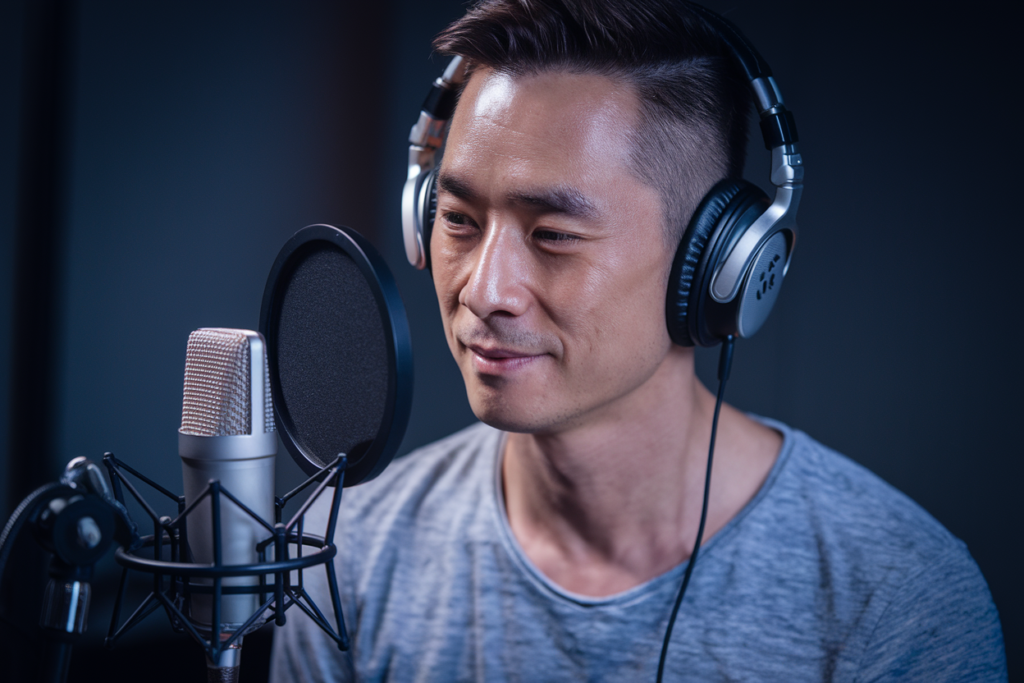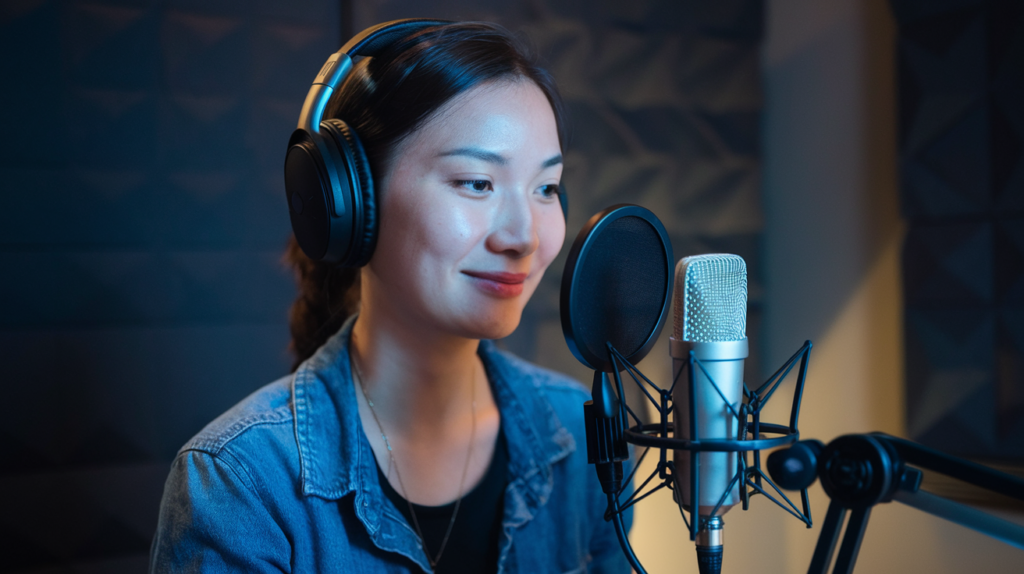Key Takeaways
- Cultural Misinterpretations: Successful adaptations must accurately capture the nuances of Chinese culture to resonate with audiences and avoid confusion or disappointment.
- Pacing Challenges: Adapting stories often leads to issues with pacing, affecting the timing of humor, drama, and suspense, which are crucial for viewer engagement.
- Censorship Complications: Government regulations can dilute narratives by restricting themes and imagery, resulting in adaptations that feel incomplete or misrepresentative.
- Lack of Cultural Sensitivity: Ignoring essential cultural elements can lead to stereotypes and clichés, negatively impacting character authenticity and emotional depth.
- Impact on Audience Reception: Both domestic and international viewers have specific expectations; failure to meet these can lead to negative perceptions and disengagement from the adaptation.
- Importance of Skilled Voiceovers: Selecting appropriate voice talent is vital for conveying emotion and intent, enhancing the connection between characters and audiences across cultures.
Have you ever wondered why some adaptations of Chinese media just don’t hit the mark? The problems with Chinese media adaptation can leave audiences scratching their heads and wondering what went wrong. From cultural misinterpretations to pacing issues, these challenges often hinder the storytelling experience.
When a beloved story makes its way from page to screen, it’s not just about translating words; it’s about capturing the essence of a culture. Many adaptations struggle with this balance, leading to confusion or disappointment among viewers. In this article, we’ll delve into the key issues that plague these adaptations and explore how they impact both creators and audiences alike. Let’s uncover the complexities behind adapting Chinese media and discover ways to bridge those gaps for a more authentic viewing experience.
Overview of Chinese Media Adaptation
Chinese media adaptation presents unique challenges that affect storytelling. Cultural misinterpretations often arise when creators overlook the nuances of Chinese society, leading to a disconnect with audiences. This can result in characters and narratives that lack authenticity or resonate poorly with viewers.
Pacing problems further complicate adaptations. Many stories thrive on a specific rhythm that reflects cultural elements, but these can get lost in translation. The timing of humor, drama, or suspense may shift significantly during the adaptation process, impacting overall engagement.
Additionally, voiceovers play a crucial role in conveying emotion and intent within adapted works. Selecting appropriate voice talent ensures that character voices align with their personalities and backgrounds. When done effectively, voice acting adds depth to the story and enhances viewer connection.
Ultimately, successful Chinese media adaptations require careful attention to cultural context and pacing while utilizing skilled voiceover artists who understand how to bring characters to life authentically. By addressing these key issues, creators can foster more genuine connections between their work and audiences across different cultures.
Common Problems Faced
Adapting Chinese media presents several challenges that can significantly impact the final product. Understanding these common problems helps in crafting more authentic adaptations.
Censorship Issues
Censorship often complicates the adaptation process. Government regulations may restrict certain themes, language, or imagery, leading to a diluted narrative that doesn’t fully represent the original content. This alteration can confuse viewers unfamiliar with the cultural nuances or context. For instance, when adapting stories rich in political or social commentary, creators might struggle to maintain integrity while navigating censorship laws. The result? A version that feels incomplete and fails to resonate with audiences seeking genuine representation.
Lack of Cultural Sensitivity
Lack of cultural sensitivity frequently undermines adaptations. When creators overlook essential cultural elements, they risk misrepresenting characters and narratives. Authentic stories reflect deep-rooted traditions and values; ignoring them can lead to stereotypes or clichés that alienate viewers. It’s crucial for voice talent involved in these projects to embody not just the words but also the sentiments behind them. Failing to select appropriate voice actors who understand these subtleties may result in performances lacking emotional depth and authenticity—detracting from viewer engagement and connection.
By addressing these common issues—censorship and cultural sensitivity—creators can improve their adaptations‘ credibility and viewer reception.
Impact on Storytelling
Adaptations of Chinese media often struggle with storytelling due to various factors that hinder authenticity and engagement.
Alteration of Original Content
Altering original content during adaptations can compromise the integrity of the story. Cultural nuances, specific references, and traditional values may not translate well into other languages or cultures. When changes occur, they can dilute the essence of the narrative, leaving viewers disconnected from characters and plots. Maintaining the original themes while adapting them for a new audience requires careful consideration. This process ensures that core messages remain intact, allowing international viewers to appreciate the richness of Chinese culture.
Misrepresentation of Characters
Misrepresentation of characters poses another significant challenge in adaptations. When creators lack cultural sensitivity, they risk portraying stereotypes instead of authentic representations. Such portrayals can alienate audiences who seek relatable and genuine characters. Voiceovers play a crucial role here; selecting skilled voice talent can elevate character depth and emotional resonance. A talented voice artist brings layers to their performance, ensuring that character motivations come across clearly and authentically. By staying true to cultural contexts and carefully crafting character arcs, adaptations foster a more engaging storytelling experience for all audiences.
Through thoughtful adaptation practices that prioritize authenticity in both content alteration and character representation, stories maintain their impact across diverse cultures while creating richer viewing experiences.
Audience Reception
Audience reception plays a vital role in the success of adaptations. Understanding how both domestic and international viewers perceive these changes can significantly impact their effectiveness.
Domestic Audience Perspectives
Domestic audiences often hold expectations shaped by cultural nuances and original storytelling styles. When adaptations miss the mark, viewers may react negatively due to perceived inaccuracies or lack of authenticity. Characters that resonate deeply in their original context might feel flat or misrepresented when adapted for different formats or markets. Additionally, if voiceover talent fails to capture the emotional depth intended in the original performance, it can create disconnection and dissatisfaction among local viewers. This gap underscores the importance of selecting skilled voice actors who truly understand the characters’ motivations and emotions.
International Audience Reactions
International audiences bring their own set of expectations and cultural backgrounds to adaptations. They often seek authentic representations that reflect genuine storytelling rather than diluted versions influenced by censorship or cultural misunderstandings. If voiceovers don’t align with character portrayals, it can lead to confusion or disengagement from global audiences. Adaptations that prioritize accurate representation through thoughtful casting of voice artists tend to resonate more positively across different cultures. By ensuring that voice over talent conveys emotion effectively, creators enhance engagement and foster a deeper connection with international viewers, allowing them to appreciate the richness embedded within Chinese narratives.
By focusing on audience reception—both domestically and internationally—adaptations can better navigate challenges while creating an impactful experience for all viewers involved.
Conclusion
Adapting Chinese media comes with unique challenges that can hinder the storytelling experience. When cultural misinterpretations arise or pacing issues occur, the essence of the narrative often gets lost. It’s essential to prioritize authenticity in adaptations to maintain viewer engagement.
Censorship and a lack of cultural sensitivity further complicate this process, leading to diluted narratives that fail to resonate with both domestic and international audiences. By focusing on thoughtful adaptation practices and selecting skilled voice talent, you can enhance character depth and emotional resonance.
Ultimately, successful adaptations should bridge cultural gaps rather than widen them, allowing viewers from all backgrounds to appreciate the richness of Chinese storytelling.
Frequently Asked Questions
What are the main challenges in adapting Chinese media?
Adapting Chinese media presents several challenges, including cultural misinterpretations, pacing problems, and censorship. These issues can lead to narratives that lack authenticity and fail to engage audiences effectively.
Why is cultural sensitivity important in adaptations?
Cultural sensitivity is crucial because a lack of it can result in stereotypes or clichés. This misrepresentation can alienate viewers, making it essential for creators to understand the culture they are portraying.
How does pacing affect storytelling in adaptations?
Pacing affects storytelling by influencing how cultural elements resonate with audiences. If adaptations rush or alter the rhythm of original stories, they may lose engagement and emotional impact.
What role do voiceovers play in adaptations?
Voiceovers are vital for conveying emotion and intent. Selecting appropriate voice talent enhances viewer connection and deepens character representation, making the adaptation more engaging for all audiences.
How does censorship complicate adaptation processes?
Censorship complicates adaptations by imposing government regulations that restrict certain themes. This often leads to diluted narratives that fail to resonate with both domestic and international audiences.
Why is audience reception significant for adaptations?
Audience reception is significant because it determines the success or failure of an adaptation. Both domestic and international viewers expect authentic representations; missing these expectations can result in negative reactions.
Can altering original content impact an adaptation’s integrity?
Yes, altering original content can compromise its integrity. Maintaining original themes allows international viewers to appreciate the richness of Chinese culture without losing essential narrative elements.







